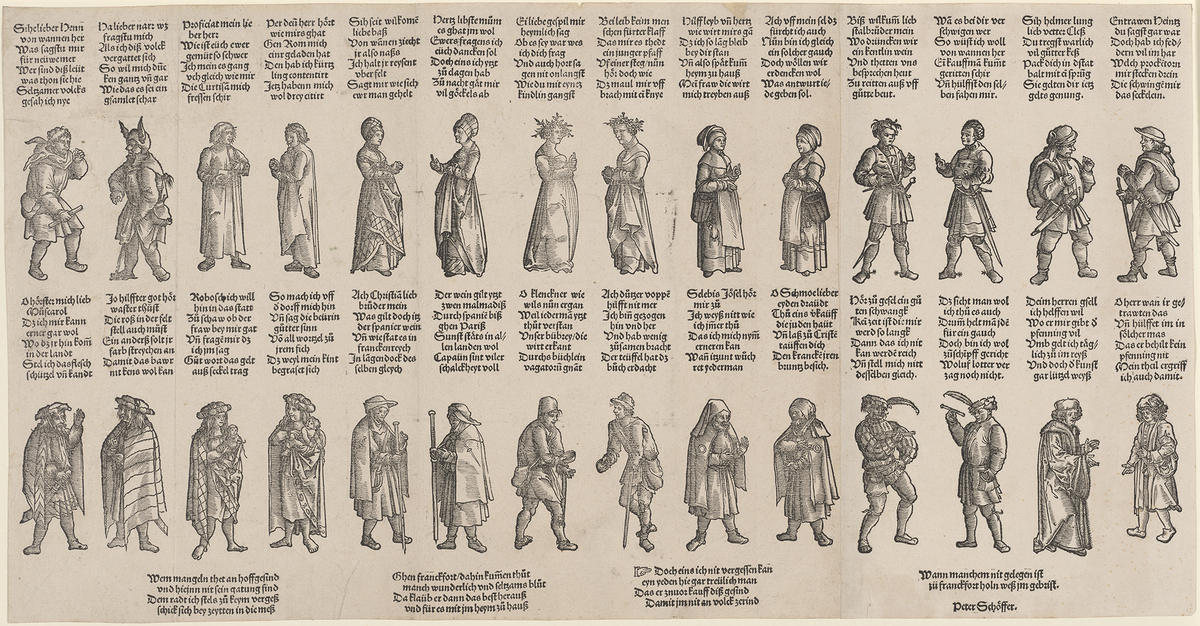Flyer for the Frankfurt Fair with Pictures and Descriptions of Visitors (1516)
Abstract
The flyer created for the Frankfurt Fair depicts different groups of people that could be encountered there. From marginalized groups and minorities to maids, peasants, highwaymen, businessmen and wealthy merchants—virtually everything and everyone was represented. These pictures make clear that German society in the Early Modern period was characterized not only by hierarchy and inequality but also by plurality. This is conveyed by the diversity of the individual members of society and their respective clothing.
Source

Source: Flyer for the Frankfurt Fair with Pictures and Descriptions of Visitors, 1516. Kulturstiftung Sachsen-Anhalt, Kunstmuseum Moritzburg Halle (Saale). Photo: Kulturstiftung Sachsen-Anhalt.
Additional information available online at: https://www.deutsche-digitale-bibliothek.de/item/5ET3N4FDZ26GSVHQPHJVRVCY2VZUHBHA
Kulturstiftung Sachsen-Anhalt / Kunstmuseums Moritzburg Halle (Saale). Further reproduction only with permission of the Kulturstiftung Sachsen-Anhalt
Further Reading
Gabriele Mentges, “Mode, Städte und Nationen: Die Trachtenbücher der Renaissance,” in Jutta Zander-Seidel, ed., In Mode. Kleider und Bilder aus Renaissance und Frühbarock. Ausstellung im Germanischen Nationalmuseum. Nürnberg, 2015, pp. 144–51.
Ulinka Rublack, Dressing Up. Cultural Identity in Renaissance Europe. New York: Oxford University Press, 2010.
Claudia Ulbrich and Richard Wittmann, eds., Fashioning the Self in Transcultural Settings: The Uses and Significance of Dress in Self-Narratives. (Istanbuler Studien und Texte 17) Würzburg, 2015.